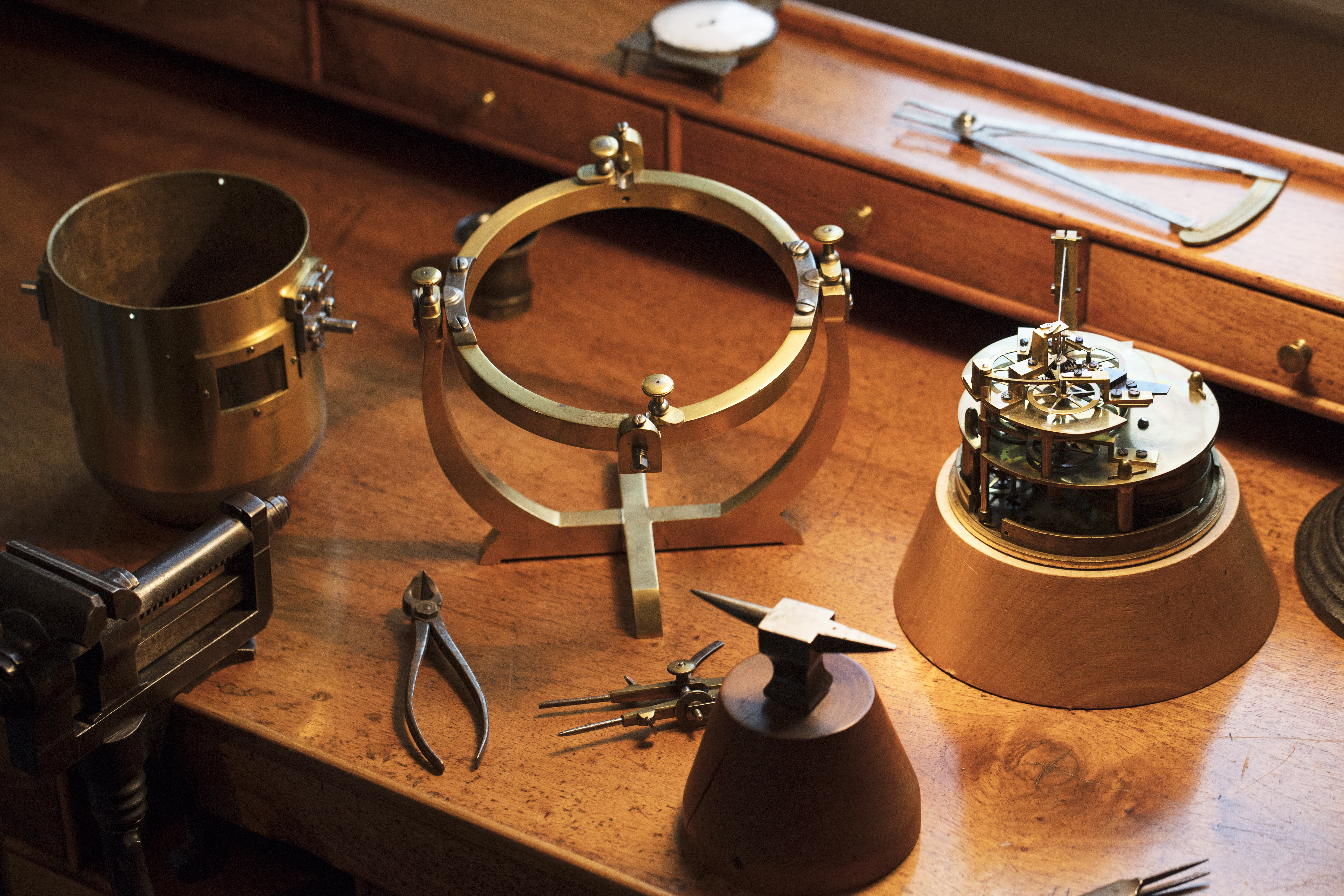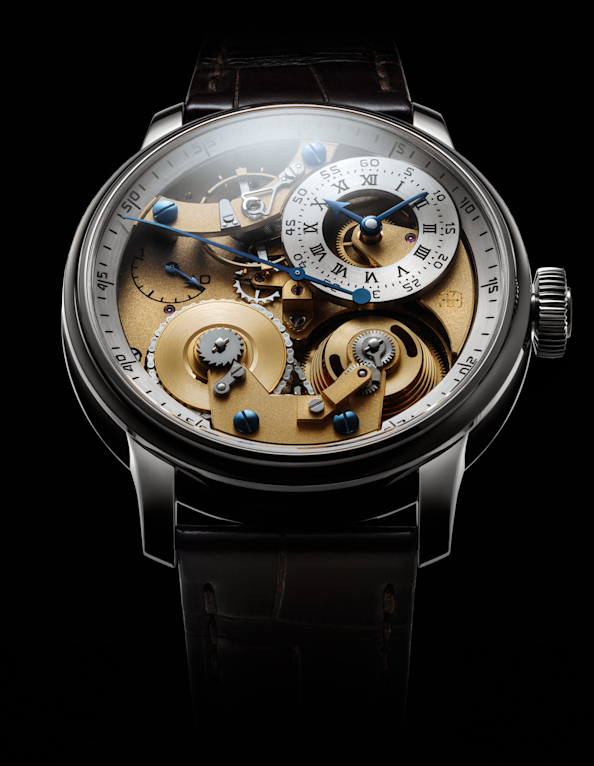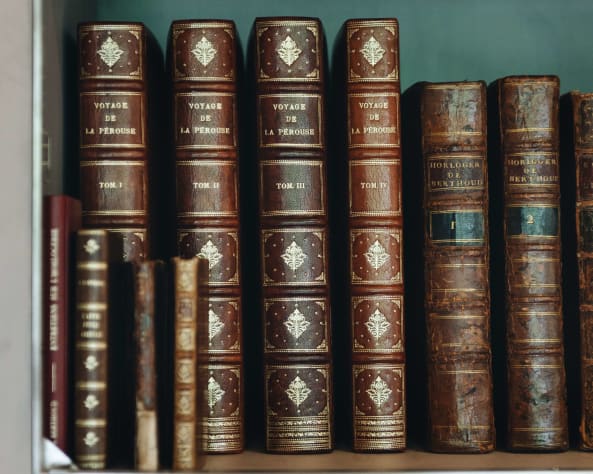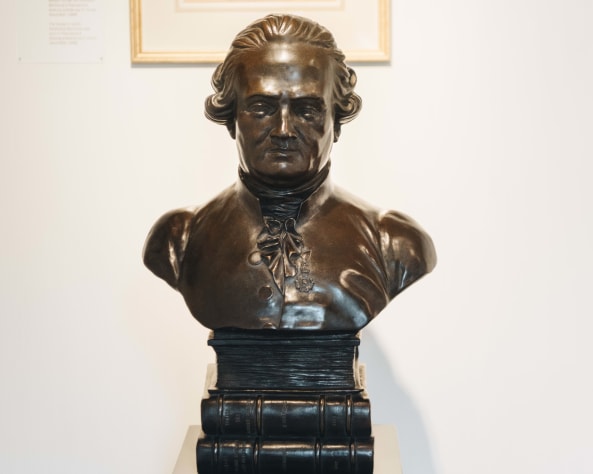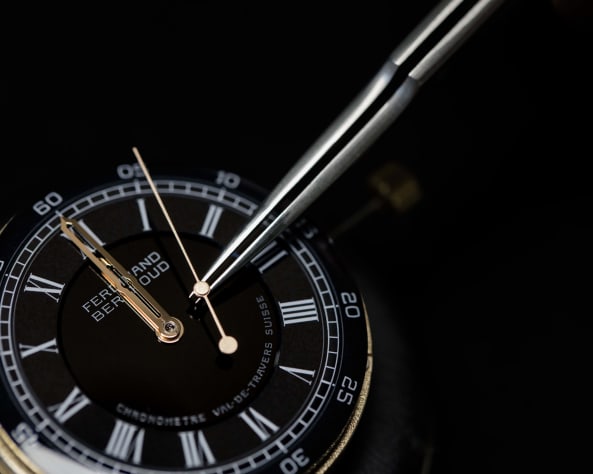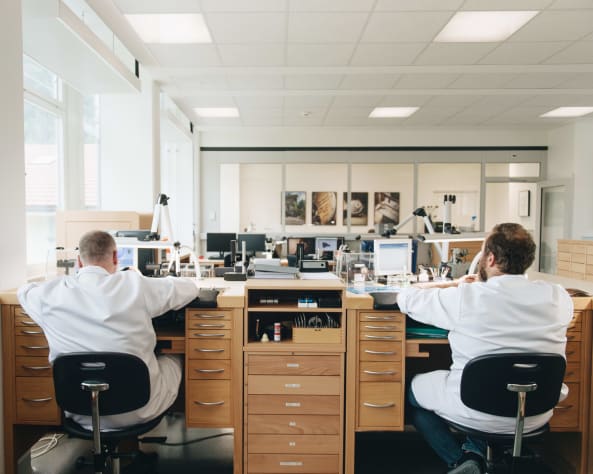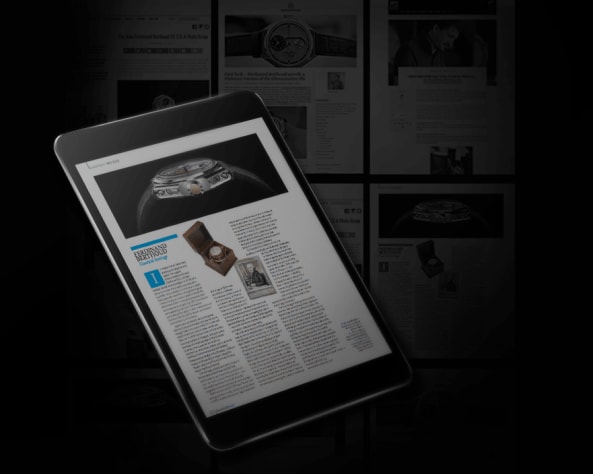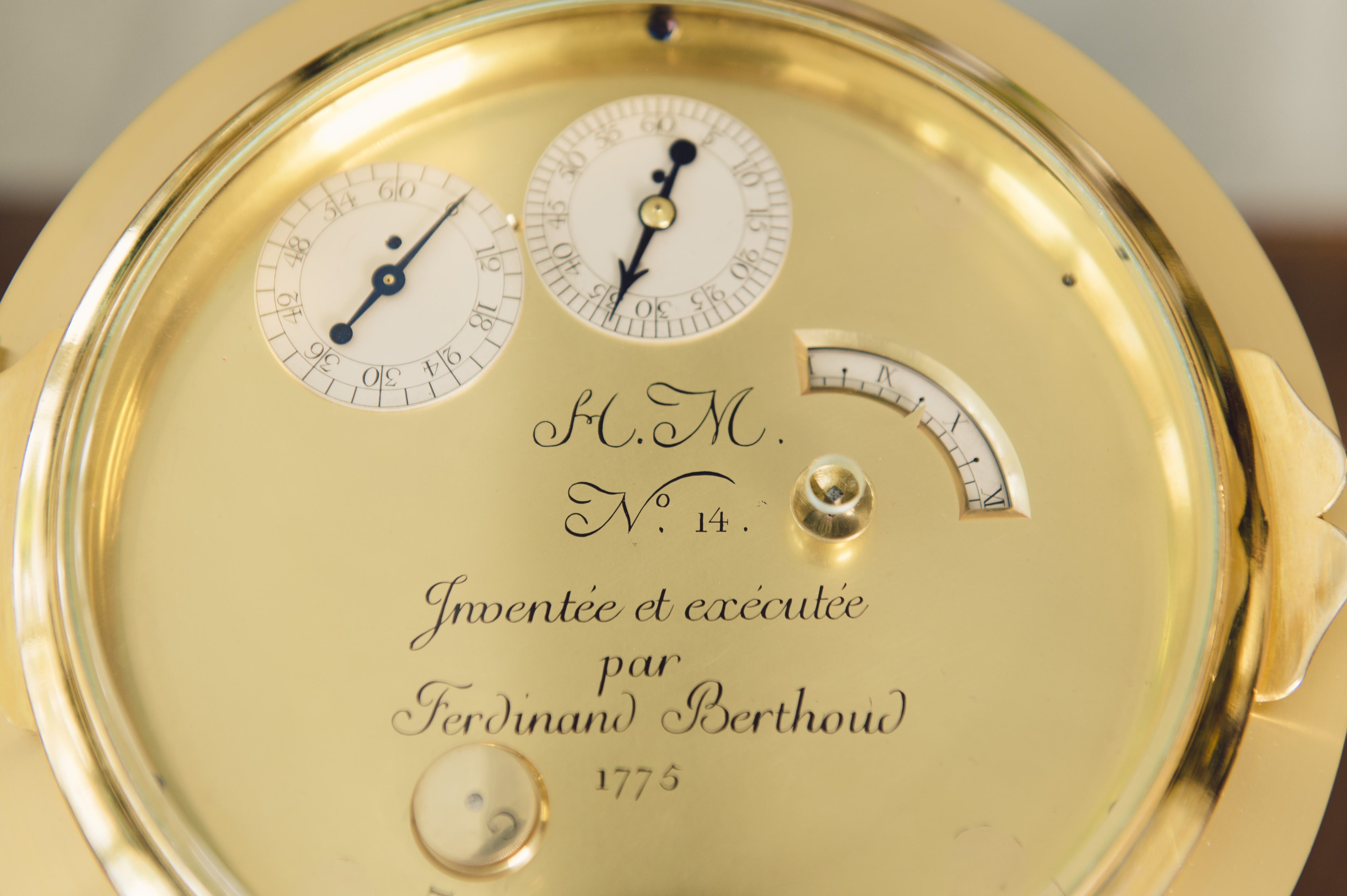
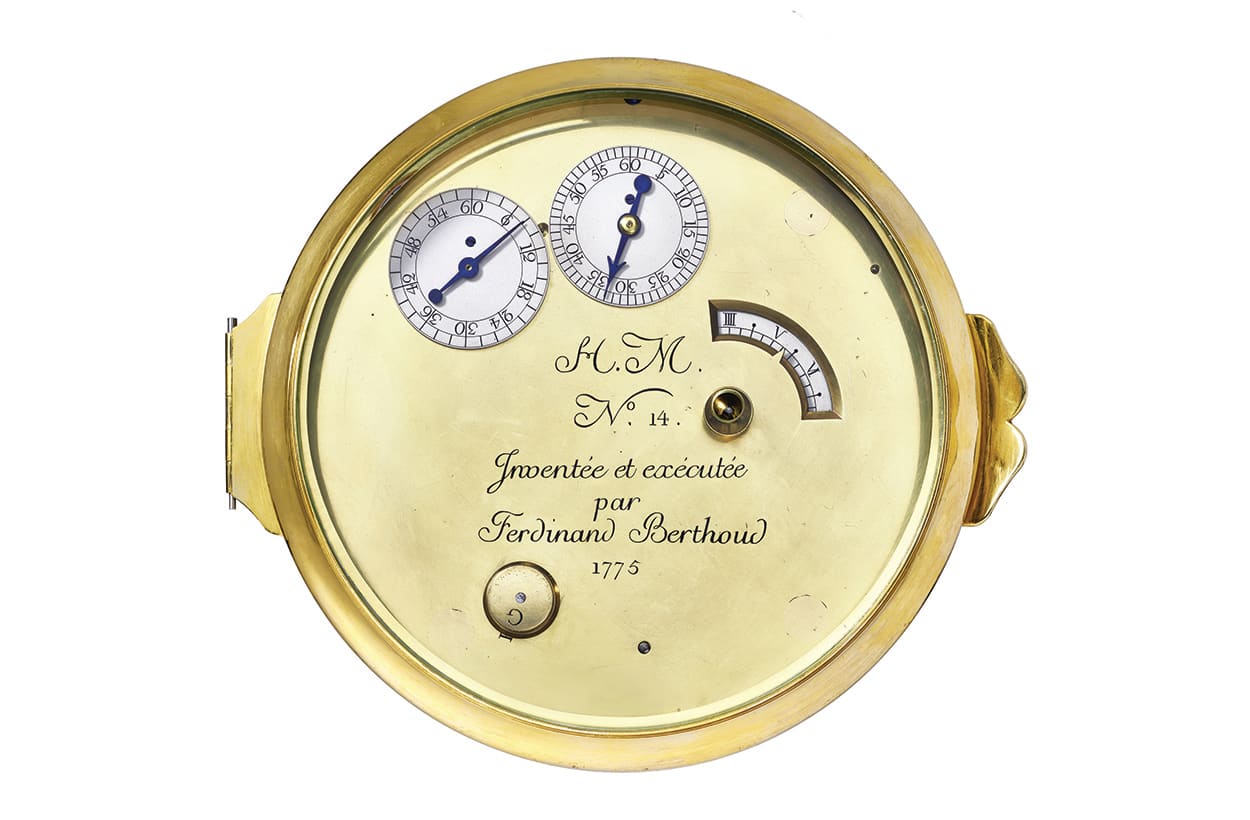
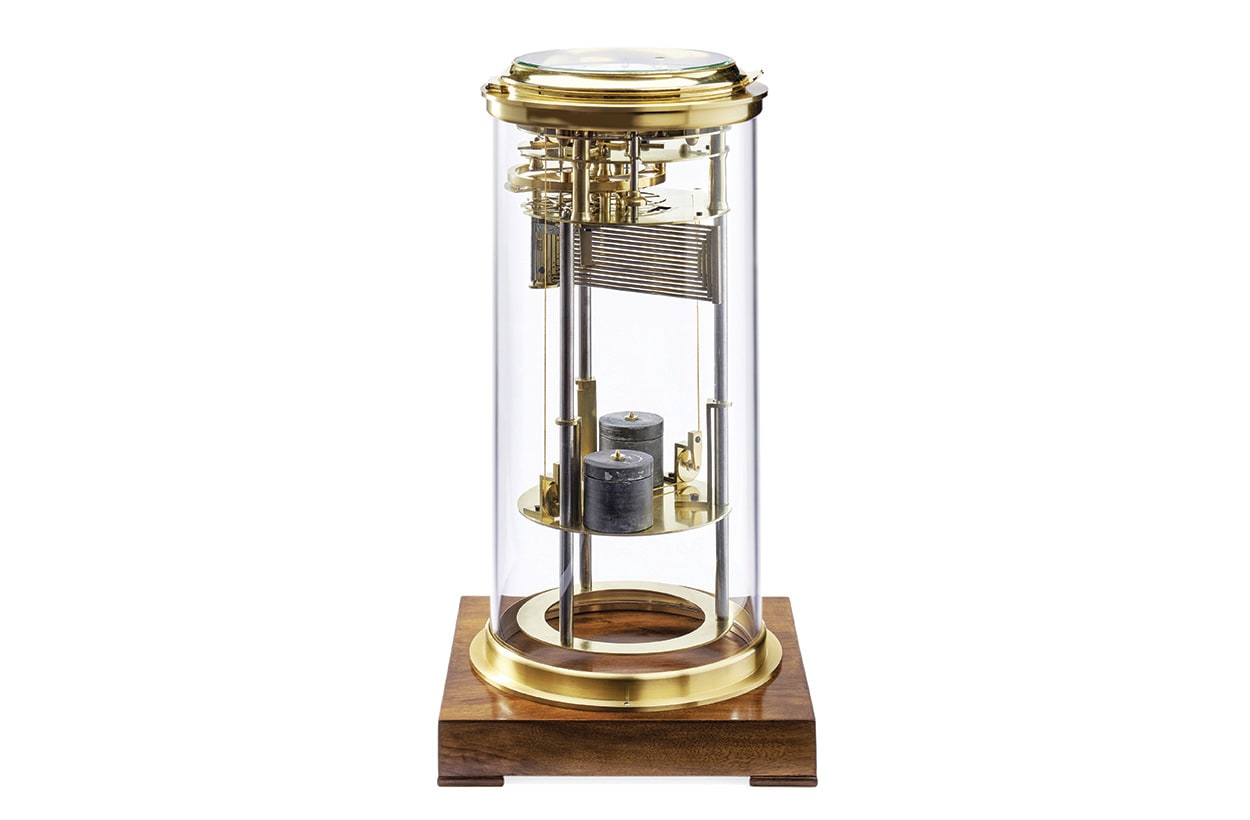
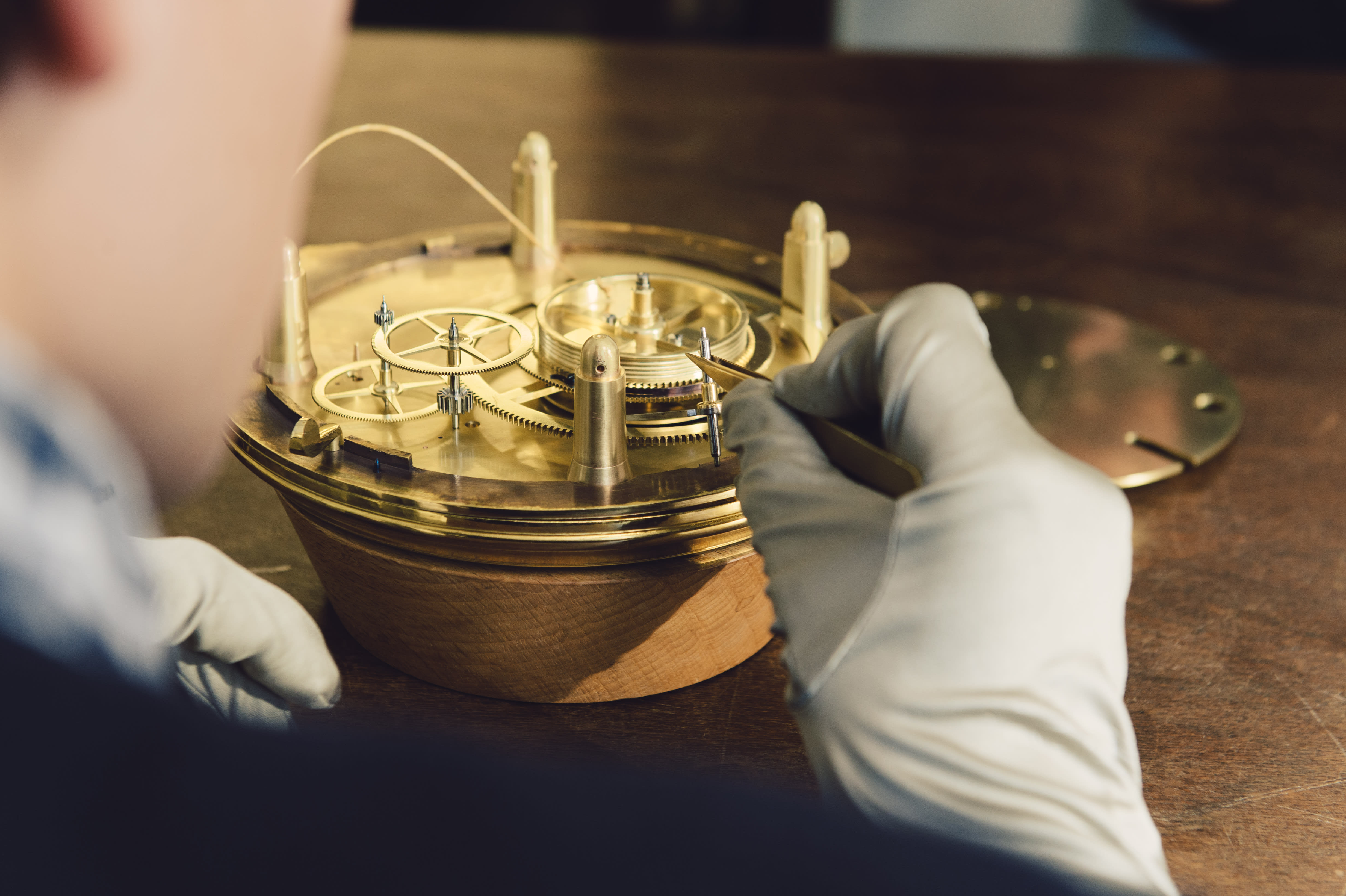
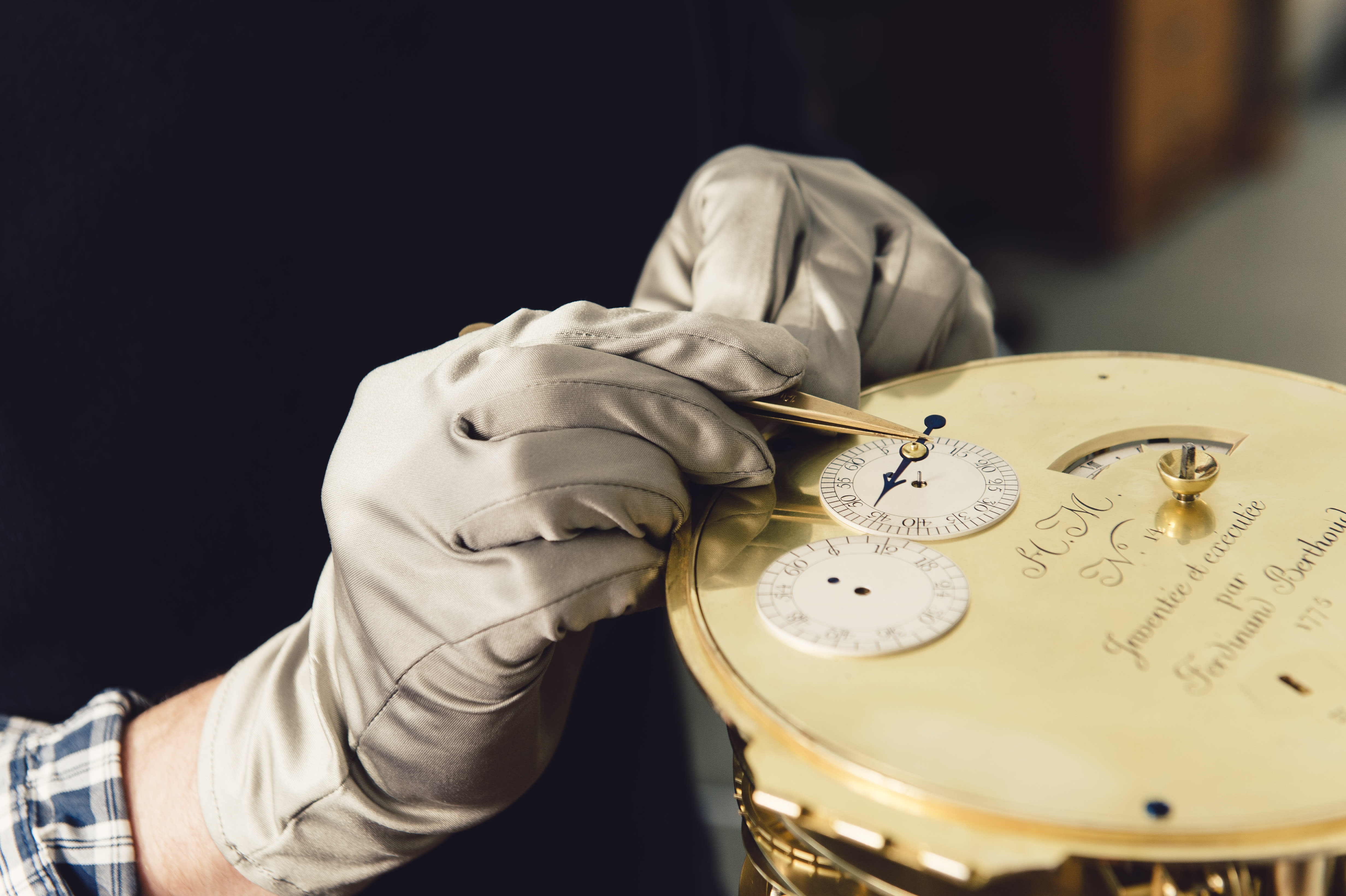
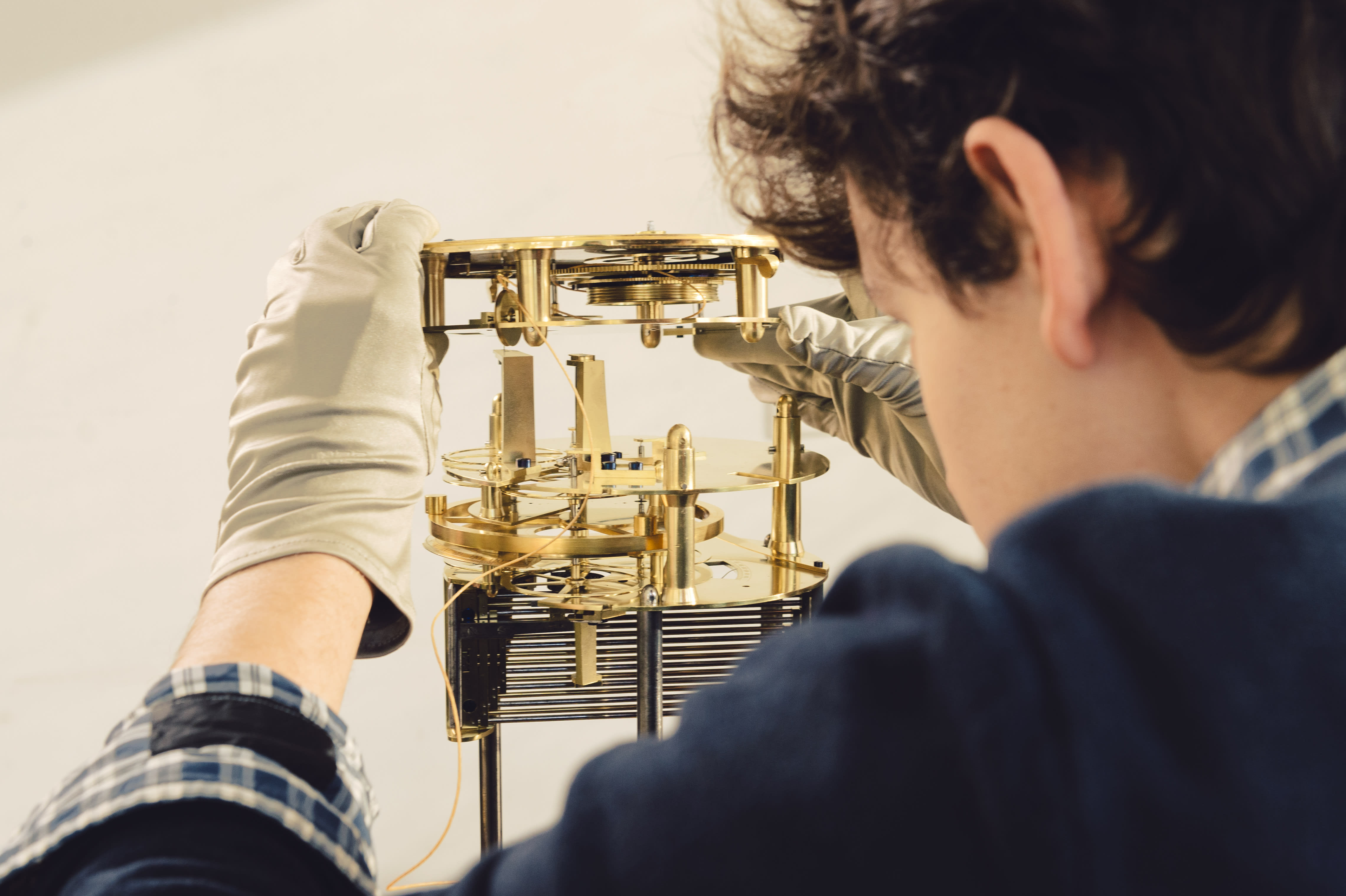
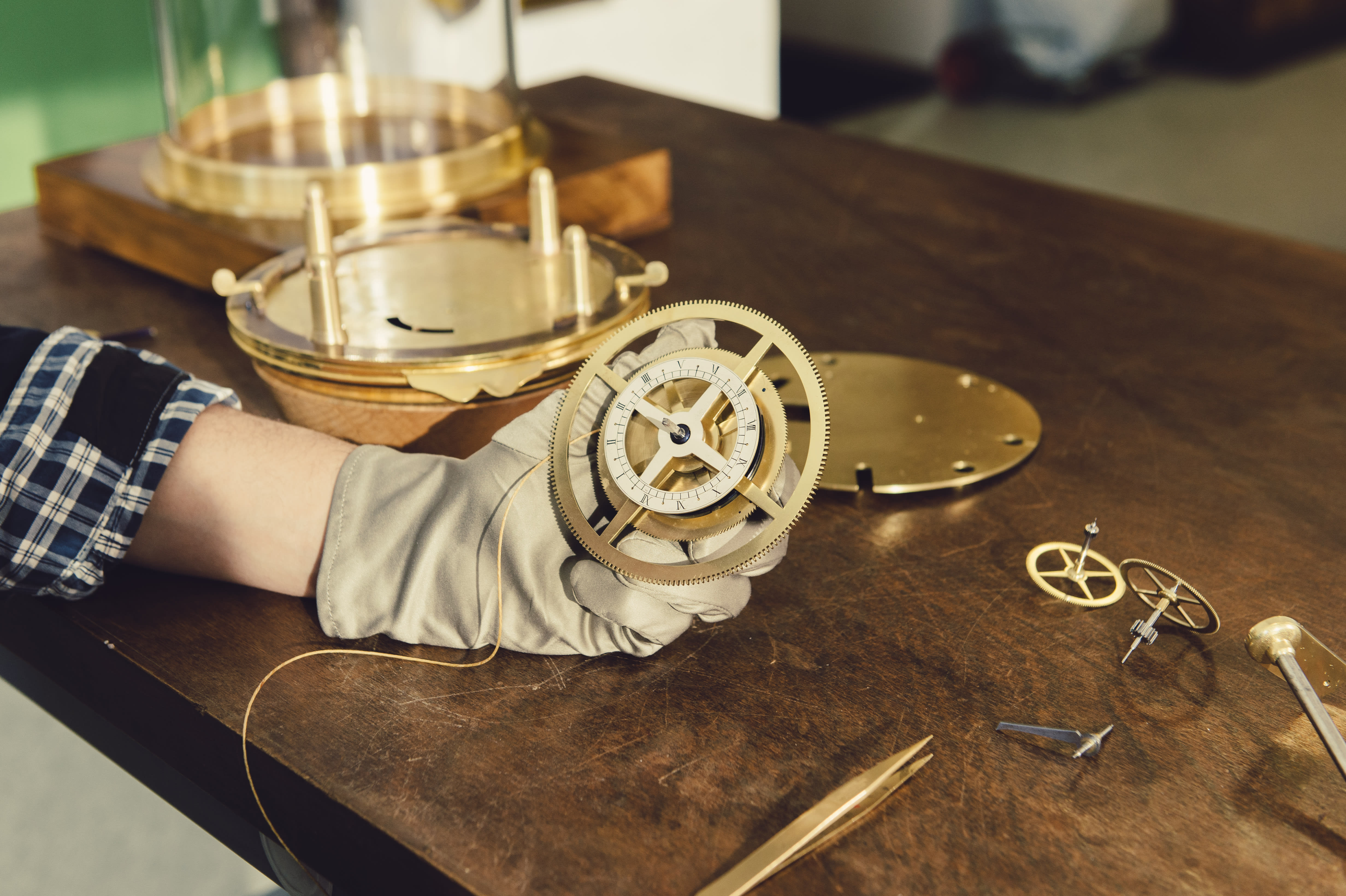
It is not a watch; it is not a new model. You won't be able to talk to its creator, and you won't be able to wear it or even touch it. You will probably only see it once in your life. Discover this technical and horological masterpiece during Watches and Wonders Geneva.
Ferdinand Berthoud made only 21 weight-driven marine clocks during his lifetime. To date, 11 of them have been located in private collections or museums; the Conservatoire National des Arts et Métiers in Paris alone has six examples. Chronométrie Ferdinand Berthoud is proud to announce that one of these 11 creations will be joining the L.U.CEUM collection in Fleurier.
A unique occasion to admire a pioneering precision timekeeping object
This measuring instrument is one of those that enabled navigation on the high seas and the discovery of new lands: only a Marine Clock allowed sailors to calculate longitudes and thus to keep a fixed course for several months. Entirely crafted using manual tools, it offered the ultimate level of accuracy for the time, gaining or losing just one second per week – an exceptional result that could still challenge the finest contemporary chronometers.
It is interesting to note that the object has not acquired its value in recent times due to its venerable age, but was instead already valuable 250 years ago. It was the most important onboard instrument, placed in the Captain’s cabin and under his direct responsibility. The “Longitude” Marine Clocks " always went in pairs. This principle of redundancy when it comes to critical navigation instruments is still the rule nowadays for both maritime and airborne navigation.
It is this extremely rare witness of a decisive early period in the history of horology that the Maison has decided to exhibit – accompanied by countless precautions – at Watches & Wonders Geneva. This clock bears number 14 and was made in 1775. It represents all the fundamentals that are the bedrock of contemporary watchmaking, and particularly of Chronométrie Ferdinand Berthoud.
Original inspiration
Ferdinand Berthoud designed several systems intended to guarantee the highest precision of his Marine Clocks. This enabled him to lay the groundwork for the longitude calculations on which transoceanic navigation depended – and hence for the expansion of the great 18th century European powers including the Spanish Navy, which purchased this No. 14 clock as part of a global order for eight chronometers built by Ferdinand Berthoud and delivered between 1775 and 1776.
Among these systems was a constant force mechanism. The objective was to ensure the most regular possible distribution of the escapement’s driving torque. This device is still used today and equips all timepieces by Chronométrie Ferdinand Berthoud.
The second fundamental process in contemporary watchmaking is a pivoted detent escapement. Stable, energy-efficient and regular in its operation, the detent escapement is considered the first free-sprung escapement. Within this construction, the impulse comes from the escape-wheel – which is why Ferdinand Berthoud designed it to be oversized (58.4 mm in diameter) in order to ensure perfect precision as a larger escape-wheel offers greater inertia and thus enhanced precision.
Finally, Marine Clock No. 14 features a grid, the first true metallic mechanism compensating for the thermal variations that caused the metals in the movement to expand. Today, modern alloys pursue exactly the same goal. Their use was not possible three centuries ago, yet Ferdinand Berthoud had already understood the importance of thermal variations and the need to compensate for them.
Continuity of a heritage
Restoration work on Marine Clock No. 14 called for no less than 400 hours. This timepiece has been entirely restored to its original functional state, while retaining the patina associated with its age.
It still reflects the technical choices made by Ferdinand Berthoud, which continue to govern the development of the Maison bearing his name today. The constant force escapement was used right from the start with the FB 1.1. The vertical pillar-based construction of the clock – within a structure offering a view of the movement – has shaped the cases of all contemporary creations signed Ferdinand Berthoud. Finally, the eponymous Chronométrie scrupulously insists on the repairability of its timepieces, just as Ferdinand Berthoud was already doing in 1775. A successful approach indeed, since his Marine Clock No. 14 was once again set into operation without any major difficulty, 246 years after its creation.
Passing on the baton
This exceptional piece sums up the philosophy that guides Karl-Friedrich Scheufele, President of Chronométrie Ferdinand Berthoud: A passion for watchmaking history; unwavering loyalty to the founding spirit of Ferdinand Berthoud; the judicious, patient and meticulous construction of the one and only museum that bears his name; the collection composed exclusively of authentic timepieces that have been restored to perfect working order; and finally, the transposition of this set of values into contemporary collections sharing the great watchmaker’s sense of innovation and experimentation, in order to reach new heights of timekeeping precision. It is with this requirement in mind that only a few dozen timepieces leave the workshops of Chronométrie Ferdinand Berthoud each year.
***
FAST FACTS
Marine Clock, Ferdinand Berthoud, No. 14, 1775
History
8
This Marine Clock is part of an order of eight chronometers built in France by Ferdinand Berthoud and delivered between 1775 and 1776 to Cadiz, Spain. These were the first timepieces supplied by the master horologist to the Spanish Navy.
14
This timepiece is the 14th Marine Clock made by Ferdinand Berthoud, who was 48 years old at the time.
1775
Year when this rare Marine Clock No. 14 was invented and made.
1793
Year in which this clock was placed under the supervision of 24-year-old Cayetano Sánchez, trained by Ferdinand Berthoud and in charge of maintenance for the chronometers of the Royal Institute and Observatory of the Spanish Navy located in San Fernando, in the Bay of Cadiz.
21
Number of weight-driven marine clocks made by Ferdinand Berthoud and listed in the literature to date (of the 11 currently kept in museums and private collections, 6 are to be found in the Conservatoire National des Arts et Métiers in Paris).
Specifications
24 h
Power reserve of this impressive timepiece
+/- 1 sec.
Weekly precision of Marine Clock No. 14. This one was placed on a gimbal system serving to maintain it in the same position despite a ship’s rolling and pitching.
139
Exact number of components in this rare marine chronometer
58.4 mm
Diameter of its escape-wheel, which is larger than that of a longcase clock
130 mm
Diameter of its gilded brass balance-wheel, suspended from a thin metal blade, whose axis pivots between two sets of three runners (rollers)
18.5 cm
Diameter of its baseplate-dial
52.5 cm
Total height of Marine Clock No. 14
400 h
Number of hours required for its complete restoration (including historical research)
1,260 g
Weight of one of the two lead cylinders, together totalling 2,520 g
15.8 kg
Total weight of Marine Clock No. 14
Download the press kit
Next article
Restoration of the longitude clock No.30
